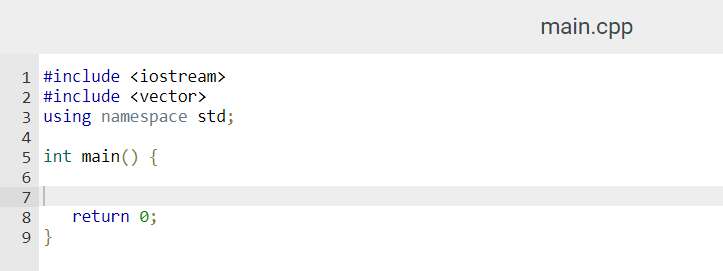Bowling involves 10 frames. Each frame starts with 10 pins. The bowler has two throws to knock all 10 pins down. The total score is the sum of pins knocked down, with some special rules. For the first 9 frames: If all 10 pins are knocked down on a frame's first throw (a "strike"), that frame's score is the previous frame plus 10 plus the next two throws. (No second throw is taken). If all 10 pins are knocked down after a frame's second throw (a "spare"), that frame's score is the previous frame plus 10 plus the next throw. In the 10th frame, if the bowler's first throw is a strike, or the first two throws yields a spare, the bowler gets a third throw. The 10th frame's score is the previous frame's score plus the pins knocked down in the 10th frame's two or three throws. Given integers represents all throws for a game, output on one line each frame's score followed by a space (and end with a newline). Note that the number of throws may be as few as 11 (strikes in first 9 frames, and no strike/spare in 10th frame), or as many as 21 (2 throws in first 9 frames, then 3 in 10th). For simplicity, the input will always have 21 integers. If the game ended with fewer than 21 throws, the remaining integers will be 0's and can be ignored. Ex: A perfect game is one where every throw is a strike. The 21 input integers will be: 10 10 10 10 10 10 10 10 10 10 10 10. The output will be: 30 60 90 120 150 180 210 240 270 300. Hints: A first for loop should just read in the 21 scores in the first vector. A second for loop should fill the second vector's first 9 elements (first 9 frames). Additional code should compute the 10th frame, which is unique. Please code in C++, all other answers on the site were not acceptable by the console
Control structures
Control structures are block of statements that analyze the value of variables and determine the flow of execution based on those values. When a program is running, the CPU executes the code line by line. After sometime, the program reaches the point where it has to make a decision on whether it has to go to another part of the code or repeat execution of certain part of the code. These results affect the flow of the program's code and these are called control structures.
Switch Statement
The switch statement is a key feature that is used by the programmers a lot in the world of programming and coding, as well as in information technology in general. The switch statement is a selection control mechanism that allows the variable value to change the order of the individual statements in the software execution via search.
Bowling involves 10 frames. Each frame starts with 10 pins. The bowler has two throws to knock all 10 pins down. The total score is the sum of pins knocked down, with some special rules.
For the first 9 frames:
-
If all 10 pins are knocked down on a frame's first throw (a "strike"), that frame's score is the previous frame plus 10 plus the next two throws. (No second throw is taken).
-
If all 10 pins are knocked down after a frame's second throw (a "spare"), that frame's score is the previous frame plus 10 plus the next throw.
In the 10th frame, if the bowler's first throw is a strike, or the first two throws yields a spare, the bowler gets a third throw. The 10th frame's score is the previous frame's score plus the pins knocked down in the 10th frame's two or three throws.
Given integers represents all throws for a game, output on one line each frame's score followed by a space (and end with a newline). Note that the number of throws may be as few as 11 (strikes in first 9 frames, and no strike/spare in 10th frame), or as many as 21 (2 throws in first 9 frames, then 3 in 10th).
For simplicity, the input will always have 21 integers. If the game ended with fewer than 21 throws, the remaining integers will be 0's and can be ignored.
Ex: A perfect game is one where every throw is a strike. The 21 input integers will be: 10 10 10 10 10 10 10 10 10 10 10 10. The output will be: 30 60 90 120 150 180 210 240 270 300.
Hints:
- A first for loop should just read in the 21 scores in the first
vector . - A second for loop should fill the second vector's first 9 elements (first 9 frames).
- Additional code should compute the 10th frame, which is unique.
Please code in C++, all other answers on the site were not acceptable by the console

ANSWER:-
Trending now
This is a popular solution!
Step by step
Solved in 2 steps with 5 images






